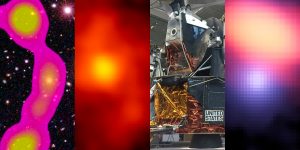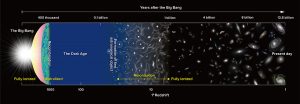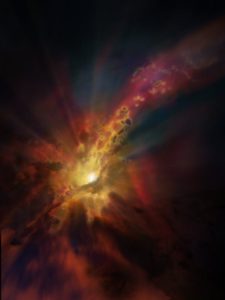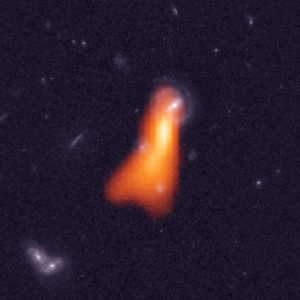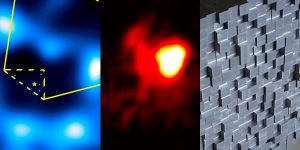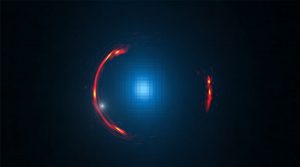VLA points to previously unknown galaxy cluster, GBT gets new vision, and ALMA uses double vision.
ALMA Observes Most Distant Oxygen Ever
ALMA detects most distant oxygen ever.
Black Hole Deluged by Cold Intergalactic ‘Rain’
Cosmic weather report shows “rain” of giant gas clouds onto supermassive black hole.
New Observational Distance Record Promises Important Tool for Studying Galaxies
Astronomers have used new capabilities of the National Science Foundation’s Karl G. Jansky Very Large Array (VLA) to open a whole new realm of research into how galaxies evolve and interact with their surroundings over cosmic time.
NRAO Media Tip Sheet: May 2016
ALMA sees cometary debris, VLBA samples of young radio galaxies, and NRAO engineering achievements.
Dwarf Dark Galaxy Hidden in ALMA Gravitational Lens Image
ALMA image hides signs of a dwarf dark galaxy.






